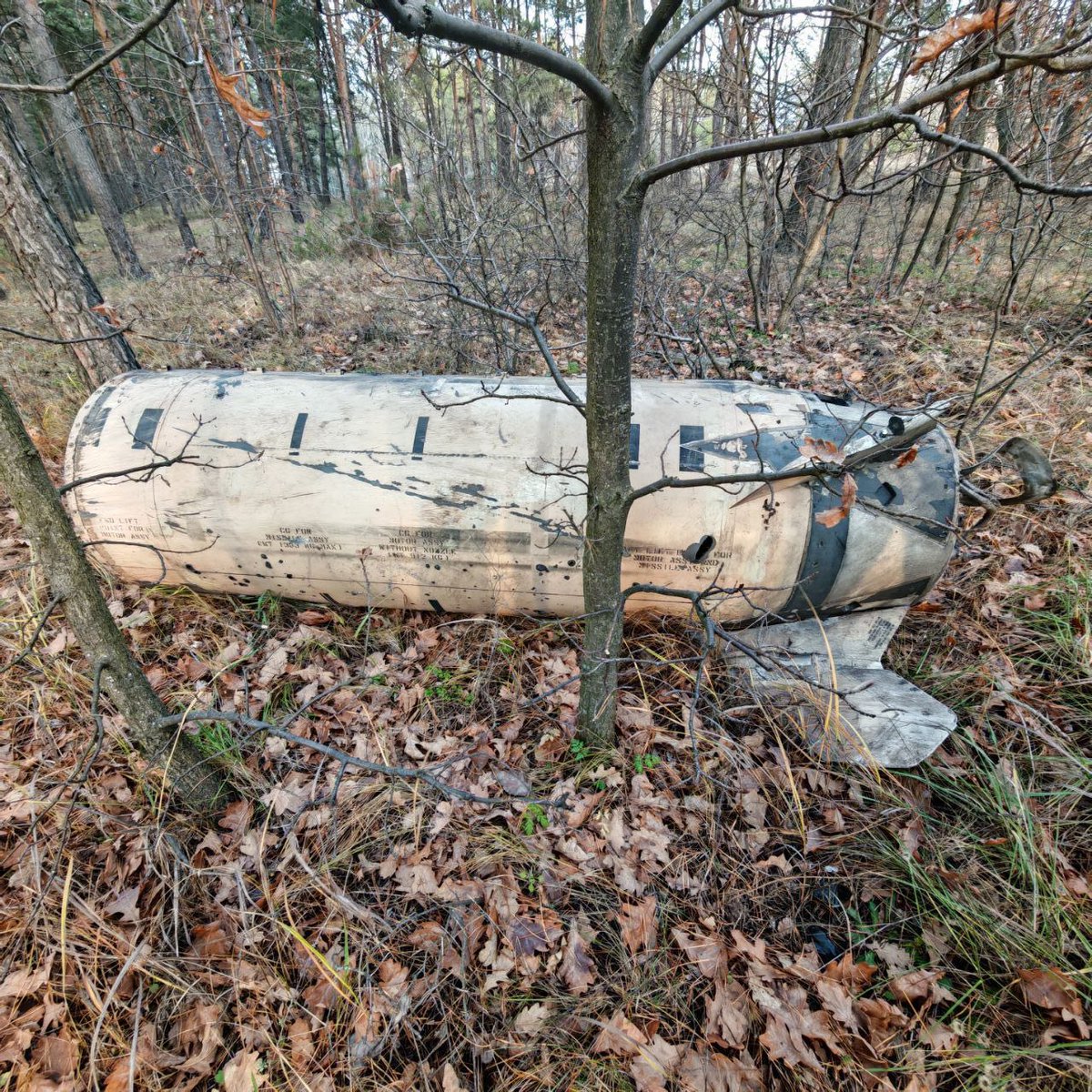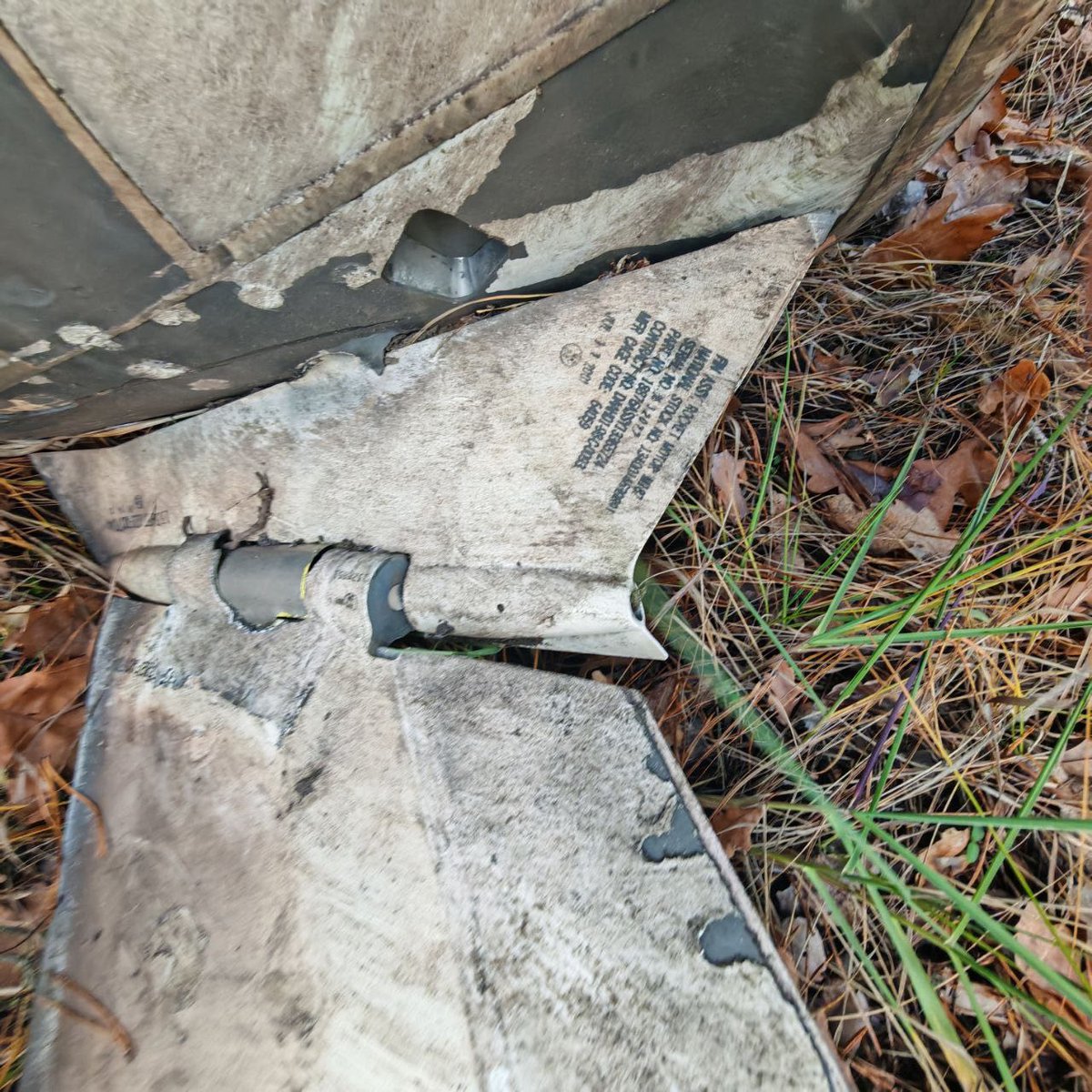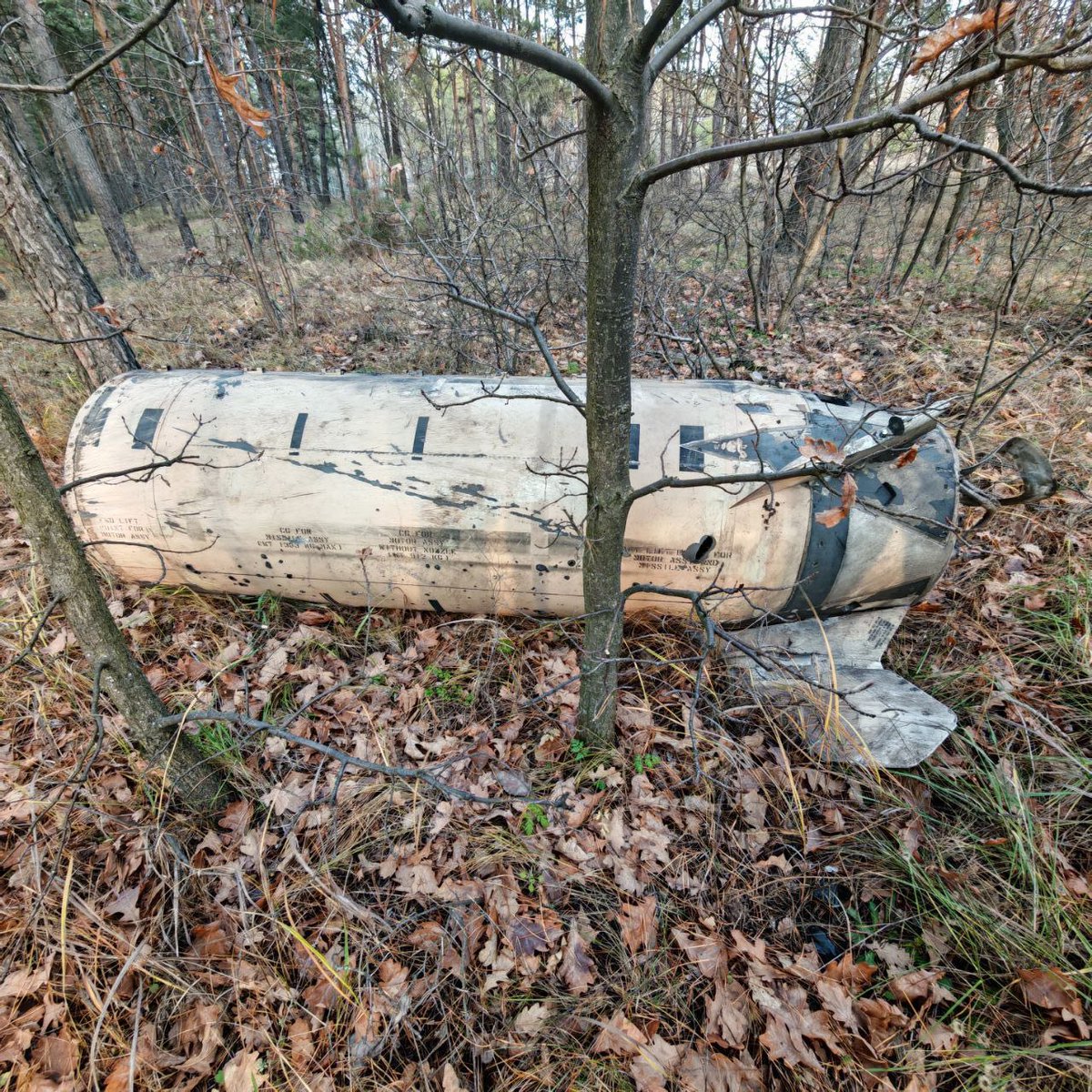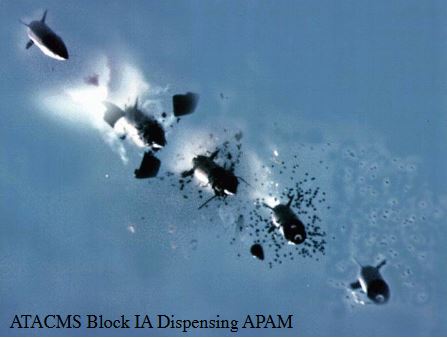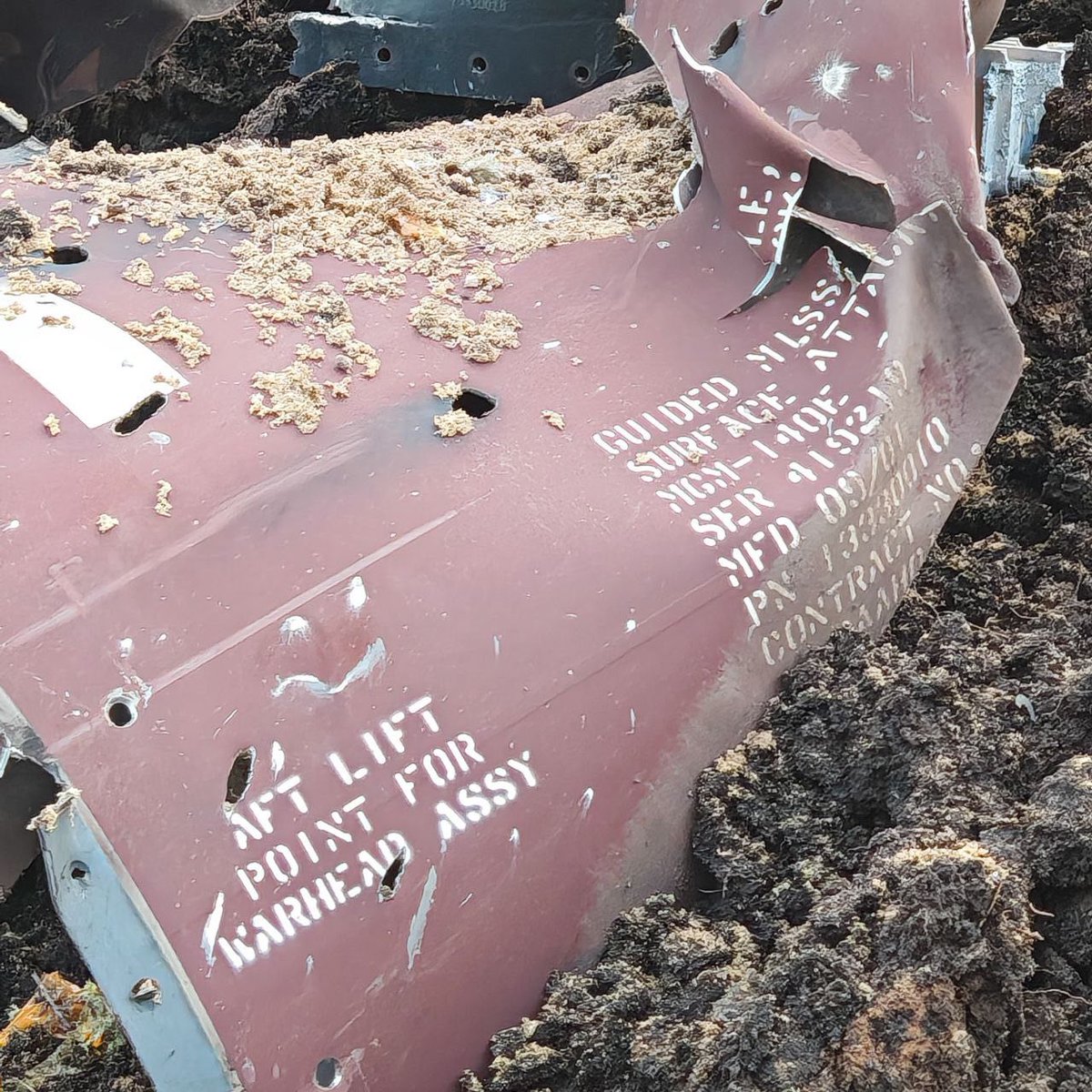ATACMS. What is it? Why does it matter so much? How many are there? How many will Ukraine get? Every question you could possibly have, answered. It's the thread you've all been waiting for... 🧵 (1/72) 

I can't TL;DR this. You're going to want to read all of it, but the key takeaway is, 🇺🇦 needs ATACMS to destroy time sensitive targets & reduce expenditure rates of Storm Shadow/SCALP-EG. Without it, certain high value Russian assets are largely safe from destruction. (2/72)
The MGM-140 Army Tactical Missile System (ATACMS) is a quasi-ballistic, manoeuvring tactical missile. It is a product of the Defense Advanced Research Projects Agency's Assault Breaker program, which began in the 1970s and sought to develop new deep strike capabilities. (3/72)
Originally designated as the Joint Tactical Missile System, a joint US Army-US Air Force program, it envisioned USAF PAVE MOVER controlling both Army surface to surface and AF air to surface ballistic missiles onto second and third echelon Soviet armored formations. (4/72) 

While the concept was successfully tested in 1982, the USAF was more interested in cruise missiles, so they left the program in 1984, leading to the re-designation to ATACMS. PAVE MOVER eventually evolved into the E-8 Joint STARS airborne battle management aircraft. (5/72) 

While JTACMS involved guided submunitions targeting enemy armor, ATACMS would temporarily abandon this feature in favour conventional submunitions. The redevelopment was conducted by Ling-Temco-Vought, who were awarded the contract in 1986. (6/72)
LTV's missile division would acquired by Loral Systems in 1992, who themselves would be acquired by Lockheed Martin in 1996. Lockheed Martin Missiles and Fire Control has produced ATACMS since then. (7/72) 

This chart shows the 6 different ATACMS variants that have been produced. I'm counting Block II & Block IIA as one variant, as it's unclear if the latter was ever actually fielded. Army procurement documents do not differentiate between them either. (8/72) 

The M39 (ATACMS Block I) was the first to enter service, in Jan 1991, just in time for Operation Desert Storm, during the 1st Gulf War. It was not very precise, with only INS guidance, but compensated with a large payload of 950 M74 Anti-Personnel Anti-Material bomblets. (9/72) 

The M74 APAM cluster bomb, as the name suggests, was designed to destroy enemy personnel and soft material targets. Alpha Battery, 6-27th Field Artillery Battalion, has the distinction of firing the first ATACMS in combat, demonstrating the system's effectiveness. (10/72) 

On Jan 18, they fired 2 ATACMS in a Suppression of Enemy Air Defenses (SEAD) mission in support of B-52 bombers, against 2 Iraqi SA-2 surface to air missile (SAM) sites, and destroyed both. Later that day, 6 more would be fired to successfully neutralize other SAM sites. (11/72) 

The Army was pleased with ATACMS' performance but identified increased range and precision as desired improvements for the system. Block IA delivered both, with the introduction of GPS navigation, which was accommodated by reducing the payload to 300 M74s. (12/72) 

Even if off target by 150 meters, Block IA could still achieve 57% destruction against a max range (300km) target. Within 50m, 95% destruction could be expected. Block I was also able to achieve this standard, due to the higher payload compensating for reduced precision. (13/72) 

Block IA debuted during Operation Iraqi Freedom (OIF) in 2003, and continued to demonstrate it's effectiveness. Then Major General David Petraeus, commander of the 101st Airborne Division, had this to say about them: (14/72)




Hundreds of ATACMS would be fired during OIF, to great effect. The APAM payload was not particularly suitable for armored targets though. This shortcoming led to the revival of the originally envisioned anti-armor capability, which was delivered by Block II/IIA (15/72) 

Block II/IIA carried 13 Brilliant Anti-Armor (BAT)/6 Improved BAT submunitions, which utilized a dual mode acoustic and infrared seeker to identify enemy armored vehicles, and destroy them via top attack with a tandem shaped charge warhead. (16/72) 

Although the system was once again successfully tested, and it did enter production, there were concerns with it's reliability, and it was cancelled in late 2003. The defeat of the Iraqi Army & subsequent nature of the War on Terror necessitated other priorities. (17/72) 

Concurrent with Block II development in the 90s, a variant with a unitary high explosive warhead, instead of the M74 submunitions, was developed. This is the ATACMS Quick Reaction Unitary, or M48. It filled the need for precision strike against harder targets. (18/72) 

The M48 uses the AGM-84 Harpoon anti ship missile's WDU-18/B warhead, with 215lbs of DESTEX high explosive. This is housed in M48's new WAU-23/B warhead section, replacing the M74 payload. The few that were used in OIF proved highly effective against command posts. (19/72) 

The M48 was succeeded by the M57, the result of the ATACMS "T2K" program, which maintained the same warhead, but improved the guidance & precision. It achieved a circular error probable of under 9 meters with near vertical attack. Production costs were also reduced. (20/72) 

The final variant is the M57E1, which is identical to the M57, except for the addition of a proximity sensor to the fuse, which provides an air burst capability, rather than the current point detonation. This is the sole variant in production since 2019/2020. (21/72) 

Since FY2016/17 there has been a Service Life Extension Program (SLEP) to reset the shelf life of Block I & IA missiles, which are both expired, and have payloads that fail the DoD's cluster munitions dud rate policy. Block II missiles are also available for upgrade. (22/72) 

These missiles are being upgraded to M57, and since 2019/2020, M57E1 standard. In addition to the new unitary warhead and other hardware/software upgrades, they receive new propellant. This resets their shelf life, which is 10 years. (23/72) 

Before I continue onto production, I want to address the question of why ATACMS is so important for Ukraine. Many have argued (including those who should know better) that they don't need it because they have other systems, like GMLRS, or Storm Shadow/SCALP-EG. (24/72)




These arguments have no basis in reality. They ignore the different capabilities of these systems and their different roles on the battlefield. GMLRS & Storm Shadow can conduct deep strike missions, but at very different scales. The latter has significantly longer range. (25/72)
Ukraine is due to receive the Ground Launched Small Diameter Bomb this fall, which has almost double GMLRS' official range, but still only half of that of ATACMS. GLSDB will not come in the same quantities as GMLRS either, not immediately at least. (26/72)




GLSDB can perform fire missions in the 83km-150km range, but Russia will just move it's most important assets 150km+ back. Right now only Storm Shadow/SCALP-EG can hit these very long range targets, and their quantity is finite. See this graph: (27/72)
https://twitter.com/FRHoffmann1/status/1688579209004761088
While the supply of ATACMS is finite as well, diversifying Ukraine's options will ensure that no single system is quickly exhausted due to operational needs. Even if Storm Shadow/SCALP-EG were being supplied in large number, ATACMS provides very different capabilities. (28/72)
The former is a subsonic Air Launched Cruise Missile (ALCM), the latter is a ground launched hypersonic quasi-ballistic, manoeuvring missile. They have comparable ranges, and are both high precision weapons, but their similarities end there. (29/72)
ALCMs are inherently the least responsive long range strike capability, because they require route planning, need to be loaded onto an aircraft, and then flown to a launch location closer to the front line, as to maximize their potential range. This all takes time. (30/72)
The route planning for a Block III Tomahawk cruise missile takes 1 hour. Storm Shadow/SCALP-EG is likely similar. The Su-24 carrying it will take around 15-25 minutes to fly from Starokostiantyniv airbase to closer to the front, allowing all of occupied Ukraine to be hit. (31/72) 

Storm Shadow/SCALP-EG travels at a top speed of Mach 0.8, so if the target is at maximum range, then you're looking at 20-25 minutes of travel time. All in it could take two hours to hit a target once it's coordinates have been acquired. (32/72)
Ground launched ballistic missiles on the other hand, can be fired from a launcher already near the front line, and hit their target within a matter of minutes, thanks to their speed. This responsiveness is critical for engaging Time Sensitive Targets (TSTs). (33/72) 

This includes assets like mobile, ground based air & missile defence systems, such as the S-300 & S-400 family, fixed & rotary wing aircraft on the tarmac, logistical assets engaged in loading/unloading, and the enemy's own artillery & missile batteries. (34/72)








These are all targets that are dangerous and/or fleeting. They are mobile and can displace long before a subsonic ALCM could target them. Subsonic ALCMs are currently Ukraine's only option for striking any target at long range though, time sensitive or not. (35/72)
The US Armed Forces Commander’s Handbook for Joint Time-Sensitive Targeting identifies ATACMS and fixed wing aircraft as the preferred systems for engaging TSTs at long range. However it notes that aircraft require a permissive threat environment, which Ukraine lacks. (36/72)
In fact, it is because of Russia's abundance of ground based air defences (a TST) that Ukraine faces an extremely non-permissive environment to operate it's aircraft in. The interceptors of S-300 & S-400 SAM systems far out-range the weapons on Ukraine's current aircraft. (37/72) 

The introduction of F-16s does not dramatically change this disparity. Ukraine would need new F-16V Block 70/72s, along with AGM-88E AARGMs (successor to the HARM, which Ukraine already operates) to gain meaningful Destruction of Enemy Air Defenses (DEAD) capabilities. (38/72) 

The prospects of 🇺🇦 being provided F-16Vs is near zero, as the USAF themselves do not operate this model. There is a long list of Foreign Military Sales customers who have pending orders for both new builds & upgrade kits, who would have to agree to 🇺🇦 jumping the queue. (39/72) 

As it stands Ukraine is already still many months away from having any operational F-16s. ATACMS can be delivered immediately without any lengthy training required. They are Ukraine's only realistic option for engaging TSTs. (40/72)
If Ukraine is going to "fight like NATO" as so many generals, both armchair and actual, believe they must, then they need to be equipped like NATO. ATACMS is without a doubt a much-needed capability for them to have. They are not a panacea though. (41/72)
Every system has limitations, ATACMS included. They are not particularly suitable for destroying hard targets, like bridges. For this, the best missile is the 🇸🇪/🇩🇪 Taurus KEPD 350 ALCM. If 🇺🇦 wants to destroy the Kerch Bridge, they need Taurus. (42/72)
https://twitter.com/FRHoffmann1/status/1690731787465506816
Now, for the numbers. This is a graph of US ATACMS procurement, by FY. I cannot stress enough that the year in which procurement is funded is not the year in which the missiles are actually produced and delivered. Please keep this in mind as I go through these graphs. (43/72) 

The ATACMS procured with FY20 & FY21 funds are a prime example of this. The FY20 296 were only scheduled to begin delivering in this past June. So the total confirmed US ATACMS procurement right now is 3030 missiles. With 516 due for delivery by the end of 2024. (44/72) 

This graph is of completed Foreign Military Sales (FMS) orders. Most recently, the orders for Bahrain, Poland & Romania were fulfilled in June 2022. This is 793 FMS missiles to date, which puts total ATACMS production at 3823. (45/72) 

Here you can see FMS orders which have not yet been completed, a total of 215. Taiwan is expected to start receiving their first HIMARS (their first ATACMS too, presumably) in 2024. Once all pending FMS & Army orders are complete, total production will be 4554 ATACMS. (46/72) 

This is the combined US & FMS procurement. Production ceased in 2011 after the completion of the FY08 Army & Bahraini FMS orders. It was restarted in 2016 for the Army & then the UAE as well. New builds stopped again in 17/18 until the next FMS, but SLEP work was ongoing. (47/72) 

The Service Life Extension Program was established in FY16, with work first starting in Q4 FY17. In 19/20 missiles started being brought up to E1 standard. By the end of September 1025 expired missiles should be restored, with 50 more to come by calendar year end. (48/72) 

Before I move onto expenditures, I want to briefly touch on ATACMS' replacement, the Precision Strike Missile (PrSM), which is now in production. As a matter of law (and IMO policy as well) the existence (or not) of a replacement doesn't impact the drawdown of any system. (49/72) 

It's still a good thing that PrSM is entering production though, if albeit at a very low rate. Lockheed has already been awarded contracts for 80 missiles. The total Army acquisition objective is 3986 for Increment 1 alone. Increment 4 development is already underway. (50/72) 

Sadly, I wasn't joking when I said VERY Low Rate Initial Production. The schedule, released in March, only has 2 missiles being delivered per month. In FY2025 it is only scheduled to double to 4 per month, but that may change. We'll find out next spring. (51/72) 

So how many ATACMS has the US expended? As of May 2018, at least 611, of all variants. There may have been a handful more since then. This also doesn't account for expenditures in training & testing, but later I'll note evidence that suggests its a very small amount. (52/72) 

By combining the procurement & expenditure data, we find that the US' maximum inventory, prior to the SLEP starting, was 2419 ATACMS. We need to account for the 10-year shelf life of a missile though, which means in 2017 the unexpired inventory was only 269 M57s! (53/72) 

In Feb 2018 they had planned to refurbish 2121 of the 2150 expired missiles. It's possible that there were in fact only 2121, with those other 29 having been expended in training & testing. As previously mentioned though, this target was cut to 1075. (54/72)




I should note that the two P-1s above cast tremendous doubt on the proposition reported in the media that the DoD "discovered" some ATACMS they didn't know they had. The Army had a precise accounting of it's expired inventory and planned on refurbishing all of it. (55/72)
So by the end of the year the unexpired inventory will be 1075 refurbished missiles, plus the 63 procured with FY2014 funds, for a total of 1138. This leaves a total of 1281 expired missiles still available for the Service Life Extension Program. (56/72) 

The SLEP planned to start with M39s before moving to A1s, so I'm assuming that all refurbished missiles were drawn from the former. This is important because although missiles may be officially expired, they may still be serviceable as is, or with minor work done to them. (57/72)
The DoD should immediately extend the SLEP contract to finish the remaining 157 M39s in 2024, and also undertake a review of the serviceability of the remaining inventory. If they need a full SLEP then so be it, but if they don't, they can be given to Ukraine. (58/72) 

The M39A1s should also be left with their current APAM payloads, rather than receiving new unitary warheads. The cluster munitions would be extremely effective against the distributed targets they were designed to destroy. See this chart again. (59/72) 

Let's look at an ideal example target for a M39A1. This satellite picture from @Tatarigami_UA, which I've added a 130m radius to, shows a Russian helicopter base near Luhansk. 1 M39A1 ATACMS could achieve approximately 65% destruction against 5 helicopters. (60/72) 

No other munition which Ukraine has, or could conceivably receive, would be even close to as effective against a target like this. Just another example of how disastrous of a decision it is to abandon conventional cluster munitions. (61/72)
For now, we have to assume the worst though, which is that the expired inventory is unusable, leaving only 1138 available. Which brings us to the question, how many of those could be plausibly given to Ukraine? 200, is a reasonable number, in my view. (62/72)
Now, there has been a myriad of reporting that the DoD doesn't want to give any of them up. I won't get too deep into the specifics of what they might need them for, but I will say the suggestion that it pertains to Taiwan is not particularly compelling. (63/72)
To hit 🇨🇳, US HIMARS need to be in 🇹🇼, which they are not. The US has not had combat forces in 🇹🇼 since 1972. From tiny Yonaguni, the westernmost Ryukyu Island of 🇯🇵, they could hit most of 🇹🇼, but an invasion really needs to be stopped in the strait, not the beaches. (64/72) 

More likely, it's for US OPLAN 5027, the contingency for a potential North Korean attack on South Korea. If the successful defence of South Korea would be jeopardized by the loss of a few hundred ATACMS, then it's not a very well formulated plan. (65/72) 

Additionally, the decision to cut the SLEP in half looks even more curious. It's a good thing the North didn't attack in 2017 when the US only had 269 unexpired missiles. Whatever ATACMS are in Korea should stay there, the Army can spare some that aren't in Korea. (66/72) 

Giving Ukraine 200 missiles would be very impactful, and still leave 938 available for deployment in Korea and elsewhere. Meanwhile, 566 missiles are still being delivered at an estimated rate of approximately 30/month. That's 1454 missiles by the end of next year. (67/72)
The situation clearly isn't nearly as dire as anonymous DoD officials are telling the media. If the US takes no action, they will have 1654 missiles in 16 months. They can absolutely afford to spare, at a bare minimum, the FY14 procured 63, which will expire in 3 years. (68/72)
200 unexpired ATACMS is a reasonable ask though, and in the absence of a decision on extending the SLEP, I'm sure Ukraine would gladly take all the expired inventory. They'll find a way to make them work. They've proved that necessity really is the mother of invention. (69/72) 

But regardless of how many ATACMS Ukraine might receive, we must provide them with a long range precision strike munition that can be sustained with ongoing production, such as JASSM or SLAM-ER. ATACMS can only bridge the gap until such systems can be operationalized. (70/72)




ATACMS alone won't win the war, but it is a key capability that Ukraine has been denied for too long. More cluster munitions & armoured vehicles are also critical needs. We can't solve all of their problems, but we can equip them materially to the best of our ability. (71/72) 

On August 16, US National Security Council Coordinator for Strategic Communications John Kirby told @ralakbar "everything [the 🇺🇦 MoD] asked for this counteroffensive, they got". That was blatantly false then, but there's still time to make it true. Let's get it done. (72/72) 

Countless sources were consulted for this thread. Chief among them was 35 years of DoD budget documents, from which procurement data was sourced. The Program Executive Office - Missiles and Space & it's PFRMS Project Office provided both the expenditures & technical information.




FMS data was acquired via the budget docs, Defense Security Cooperation Agency, DoD Contracts page, Stockholm International Peace Research Institute, Lockheed press releases, foreign government press releases, and media reports.




Numerous other US Armed Forces documents, publications and research papers provided historical information, technical data, doctrine, and other insights. The information (all of it open source) in the thread has been compiled & presented with the upmost effort to ensure accuracy. 

Acknowledgements:
My thanks go out to my colleagues at @tochnyi, chief among them @John_A_Ridge & @CasualArtyFan, without whom this thread would not have been possible. Thank you to @FRHoffmann1 as well, who's own writings have provided me with valuable information.
My thanks go out to my colleagues at @tochnyi, chief among them @John_A_Ridge & @CasualArtyFan, without whom this thread would not have been possible. Thank you to @FRHoffmann1 as well, who's own writings have provided me with valuable information.
There are many others I could name, but won't in the interest of brevity. I must recognize @DrPaulyDeSantis though, for always sending me tips, @HelloMrBond for providing me the opportunity to appear on his show and @balancedlife808, for always having words of encouragement.
Finally, I must thank @michaeldweiss, who needs no introduction and no explanation of his efforts for the Ukrainian cause.
If you found this thread informative, I would only ask that you like/share it, give @tochnyi & myself a follow, and make a donation to a Ukrainian charity of your choice.
• • •
Missing some Tweet in this thread? You can try to
force a refresh



